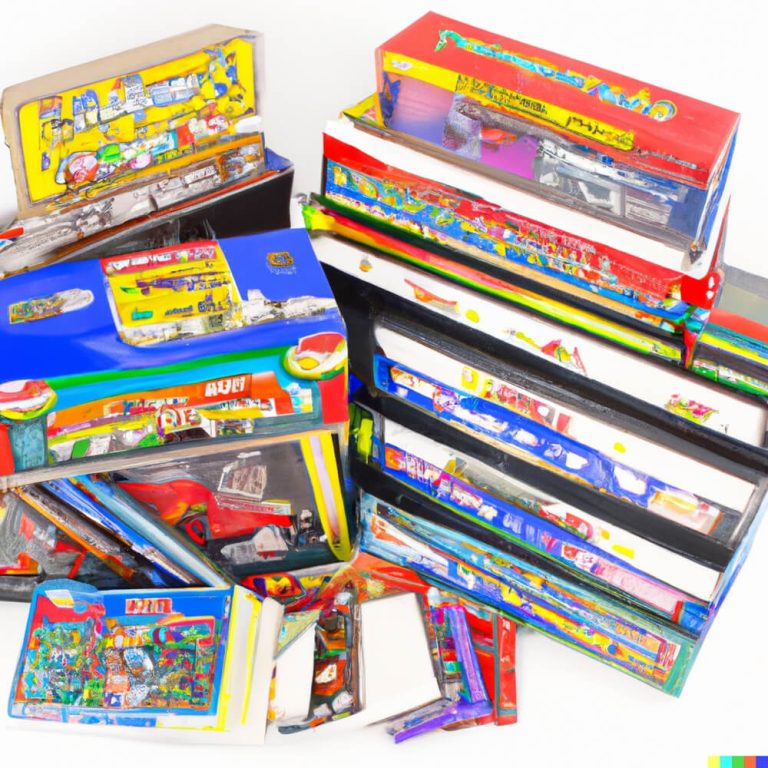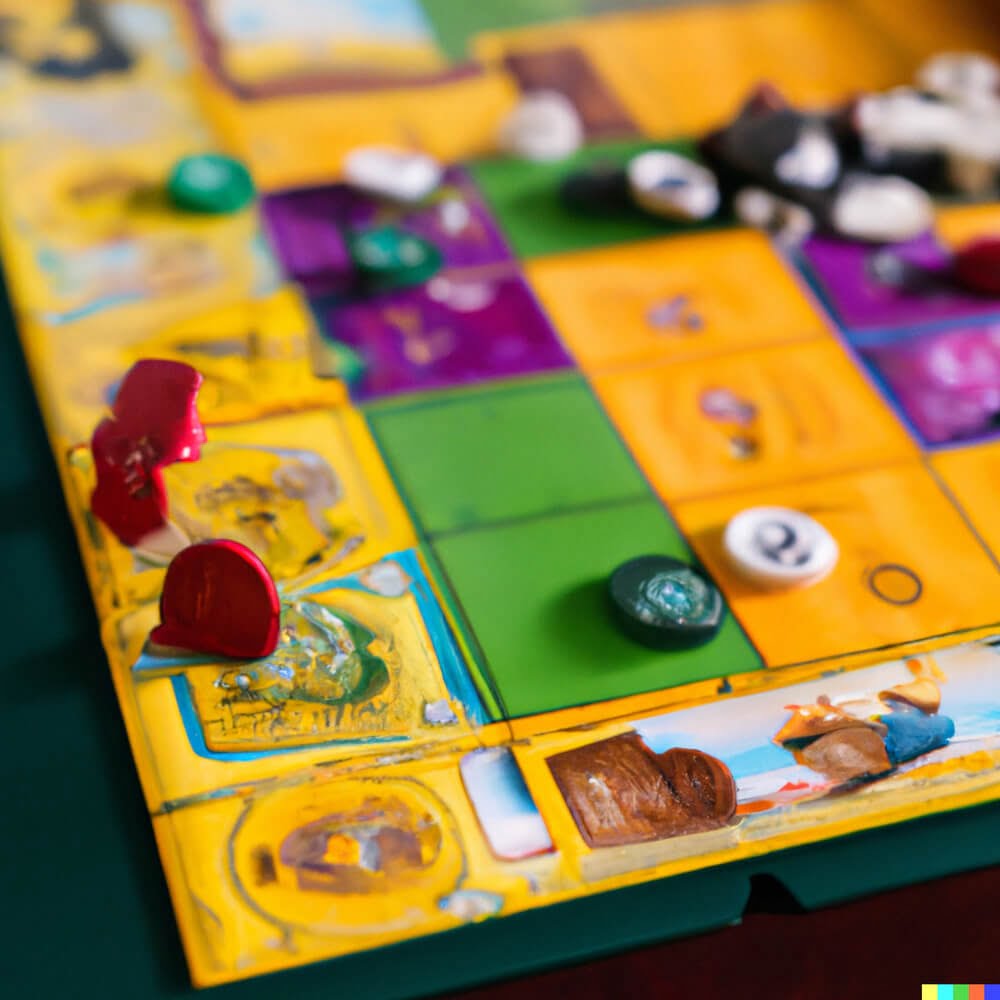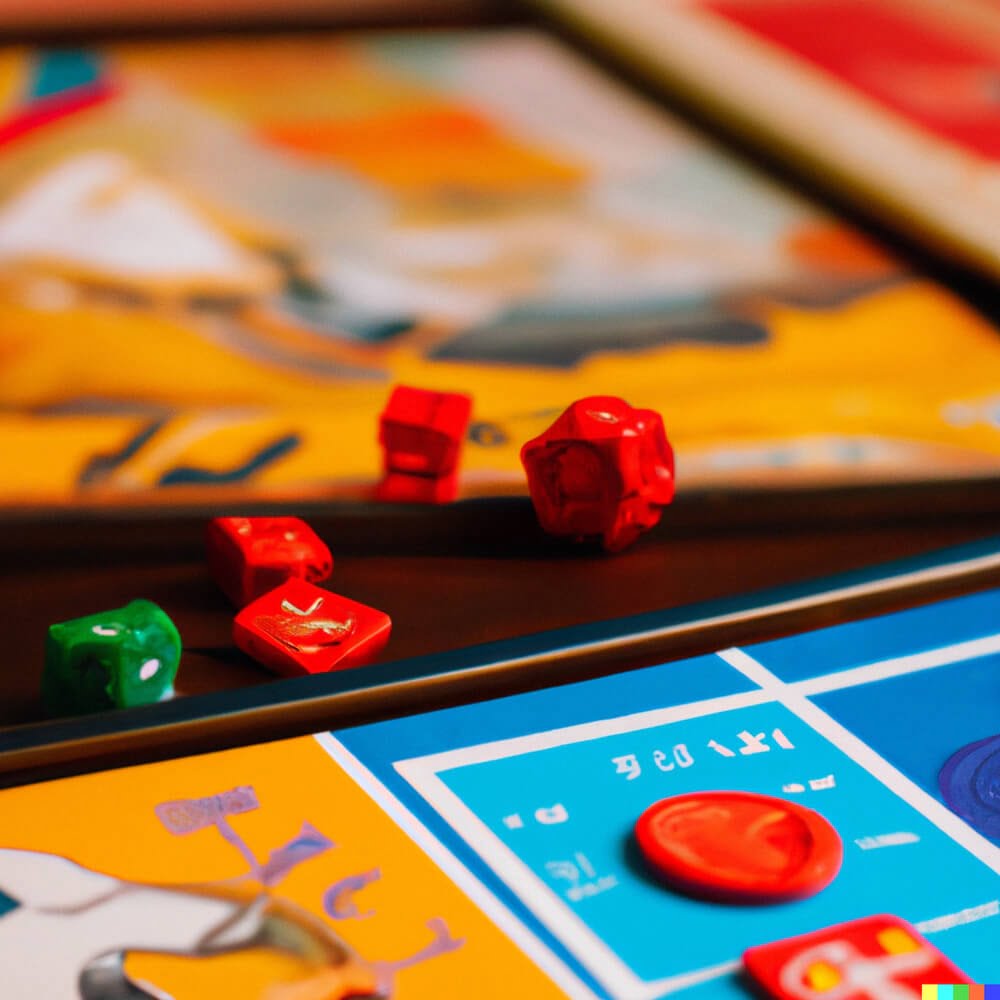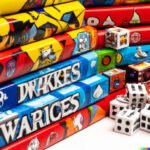Introduction
A board game designer is responsible for crafting and overseeing the development of original board games. As a designer, their core task is to conceptualize the rules, mechanisms, visuals and often the theme of a game from an idea in their head or on paper. With creative problem-solving capabilities, they are often required to develop innovative ways to make existing games more fun. Games can range from abstract strategic games involving complex rule sets, to simple card or tile games.
The board game designer works closely in conjunction with graphic designers to ensure that art assets like cards and boards are aesthetically pleasing, cohesive and contribute to the overall experience of the game. This includes producing legible iconography that make it intuitive for players to understand how to navigate within the ruleset of a particular game. Additionally, they might also be responsible for developing player aids such as charts or cheat sheets which provides players with visual cues about various strategies or tricks that could aid them during play.
In addition, a board game designer may also be expected to conduct extensive playtesting processes both internally within their workplace as well as externally within focus groups presented with beta versions of their work. From this feedback process they need to be able to pinpoint issues and swiftly adjust models as necessary in order for them produce quality finished products. They have ultimate responsibility over whether decisions made on behalf of the development team regarding mechanics and aesthetics retain thematic integrity and propel towards creating an arrestingly enjoyable user experience for final audiences!
What Sets a Board Game Designer Apart from a Video Game Designer
A board game designer creates physical board games with the goal of providing an enjoyable gaming experience. They are responsible for the design and development of the game, including rules, mechanics, artwork, components and play testing. The designer creates a narrative or structure that guides the players through their goals and objectives in each game.
What sets a board game designer apart from a video game designer is that as opposed to digital components, physical pieces must be created for every aspect of the game from scratch. This includes researching materials, choosing and ensuring that pieces are well-constructed, creating purposeful components such as money and pawns for currency during the game play and even creating visual elements such as box art to enhance the aesthetic appeal. Video games, on the other hand, may use existing digital sprites for many of these uses. Board game designers must also take into consideration storage and transportability when developing their products.
The Challenges of Bringing a Novel Concept to Life in Board Game Form
A board game designer is responsible for designing, creating, and developing a board game from the concept level to finished product. When bringing a novel concept to life in the form of a board game, the designer must first work out the basic rules and components needed to make it playable. The designer will usually include visual components such as cards, dice, tokens and other physical pieces that must all work together to create an engaging gaming experience.
The designer must also create a storyline within their game as well as its objectives and possible strategies players can take while playing. This requires not only creative energy but also technical expertise with understanding of mathematics and probability. Additionally, board game designers need strong communication skills in order to be able to communicate their ideas with other designers and producers involved in the development process.
In order for a novel concept to be brought successfully into life, extensive testing is required. Experiences testers both within and beyond of the development team should review each iteration of the board game design to check for accuracy – it’s important that all aspects of the game are balanced for fairness between players! Packaging designs should be created which includes artwork and printing designs for various types of marketing materials such as instruction manuals. Finally, customer service channels should be set up in case players have any questions once they start playing the final version of the produced game.
Crafting the Rules for Fun, Balanced and Engaging Gameplay
A board game designer is responsible for creating entertaining and enjoyable experiences through their games. This involves writing the rules in a way that ensures balanced and engaging gameplay which will keep players coming back for more. To ensure this, board game designers research other board games to discover design features or mechanics that work well together. They also analyze what makes certain games successful and focus on replicating unique elements from these successful titles in order to create a fun, yet challenging game of their own. Board game designers employ various methods for testing the effectiveness of their designs prior to release; this includes playtesting sessions with groups of volunteers who provide feedback about possible elements that could be adjusted or improved. Ultimately, the goal of a board game designer is to produce an entertaining experience that can be shared with others who appreciate its depth and complexity.
Applying Storytelling Principles to Enhance the Board Game Experience
A board game designer does a lot more than just create rules for a game. They need to apply storytelling principles in order to make the entire playing experience come alive. This involves creating characters, plots, and settings that allow players to fully engage with their imaginary worlds. The designer must understand how people behave, interact, and think in order to develop realistic characters with believable stories. In addition they must also be able to use mechanics such as dice rolling and card movement effectively within the game so that players understand what’s going on at all times while they’re playing. This task can involve some intricate design work”combining components like dice, cards, tokens and boards along with writing out specific instructions for how the players should move, act and react throughout the game play. Once the mechanics have been designed then it is essential that a designer crafts an entertaining story by placing obstacles and tasks in between player’s turns so as to keep them engaged and excited about the outcome of their actions. Characters within this imaginary world can also be used as allies or foes for other players making it an even richer experience for everyone involved!
Utilizing Technology in Board Game Design
Board game designers have to think of new, creative and innovative ways to keep their games fresh and exciting for players. In this ever-changing technological world, modern board game designers are taking advantage of new tech tools to make their designs even better. Technology is being implemented in a number of ways to make the gaming experience more interactive, dynamic, and overall fun.
One popular tactic used by board game designers is incorporating digital elements into the traditional physical version of the game”like creating apps or other digital-based extensions for people who want to take their game playing experience online. Additionally, things like artificial intelligence (AI) can be used in a virtual atmosphere to provide players with an AI opponent that reacts differently each time they play. This makes the experience of playing a board game more realistic and challenging as well as adding replay value over time.
Modern board games also sometimes include augmented reality (AR). AR technology allows players to interact with 3D visuals in a single room environment while playing the physical game”providing them with immersive experiences that weren’t possible in the past. Virtual reality (VR), too can bring an added layer of “reality” to gaming, allowing people to experience another world through interactive headsets. It’s becoming increasingly common within money-rich industries such as casinos for theme park operators wanting visitors to explore completely different realms within a few feet from where they stand
Ultimately, modern board game design is all about using technology creatively and effectively ” beyond just world building tasks”in order to create truly immersive and entertaining experiences for players no matter how long they play.
What it Takes to Find Success as a Board Game Designer
As a board game designer, it is important to first and foremost create well-conceived games that focus on fun and accessibility. People should naturally understand the rules of the game and be able to easily enjoy playing with friends or family. Understanding user experience is vital in designing enjoyable games.
In order to find success as a board game designer, one needs to earn the trust of retailers, publishers, investors, and other industry partners. Establishing fruitful relationships with those in the business can help open doors that would have otherwise remain closed. Building relationships requires good communication skills given designers will need to convey their ideas effectively to others in order for them to be taken seriously.
Game designers typically work closely with team members ranging from artists, engineers, and game testers who help ensure that all elements involved have been properly thought out before releasing any of their projects into the market. It’s no surprise then that having strong project management skills is essential in this line of work – as is being able to hit deadlines while making sure all project requirements are fulfilled.
Additionally, a successful board game designer must possess an understanding of what makes an enjoyable gaming experience by observing recent trends and applying player data analysis to better inform their decisions when creating new products or updating older ones. Finally, many find success by leveraging social media platforms such as Twitter or Reddit which offer unique opportunities for networking with potential partners or players alike. All these skills combined can help contribute towards a successful board game career!
Closing Thoughts
A board game designer has a unique role in society. Through their work, they bring people of all ages together for fun and educational opportunities. Board games enable social interaction and problem-solving which is extremely beneficial from a mental health perspective, as well as providing entertainment value. The creativity and effort that goes into designing a popular board game is monumental and deserves to be commended.
Board game designers have the power to create positive change within society by sparking moments of joy, laughter, and conversation among family and friends. Whether it’s a thoughtful strategy or an exhilarating race between opponents, board gamers are able to encounter exciting worlds alongside the people they love the most. When it comes to the broad role of board game designers in our society, there’s no limit to their potential to make us laugh, tear up, debate ideas, come together on consensus decisions”all while having a blast in the process.
In addition to being entertainment providers, board game designers can also serve as teachers through their products ” allowing players to gain valuable knowledge in areas such as language acquisition; trends in history; skills like math; and strategy growth with each additional play session. Their designs even have inspirational elements that get people thinking about philosophical questions or approaching emotionally-charged topics from outside perspectives. These types of games offer nuance beyond what we knew was possible for traditional tabletop experiences”opening doors for endless learning possibilities that could lead to real-world impact on humanity’s collective knowledge.

I love playing all kinds of games – from classics like Monopoly to modern favourites like Ticket to Ride.
I created this blog as a way to share my love of board games with others, and provide information on the latest releases and news in the industry.




